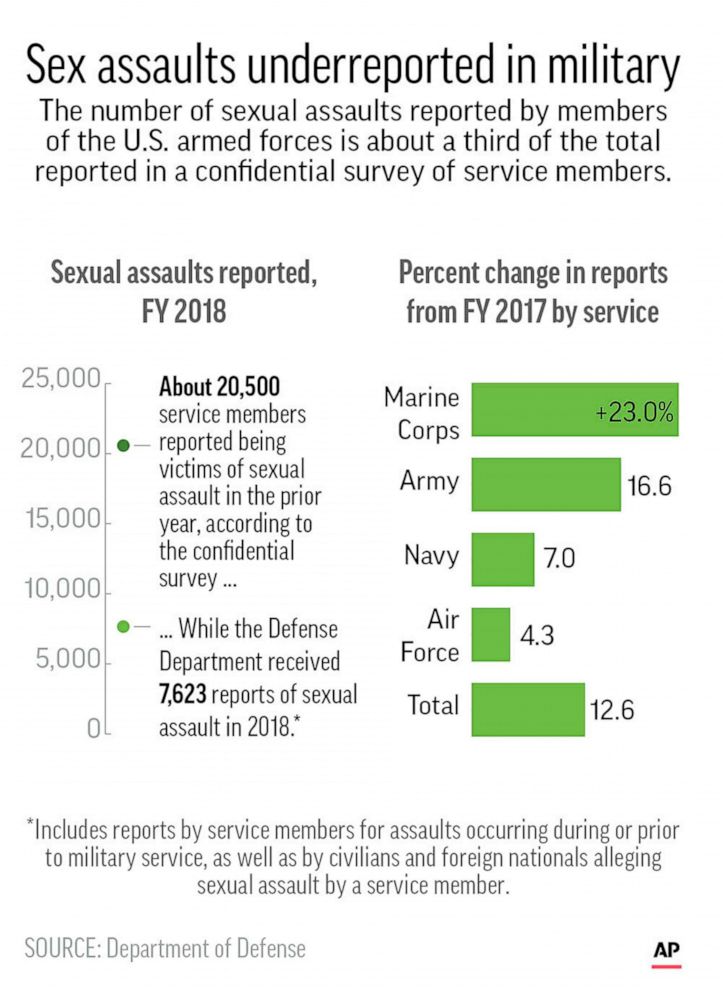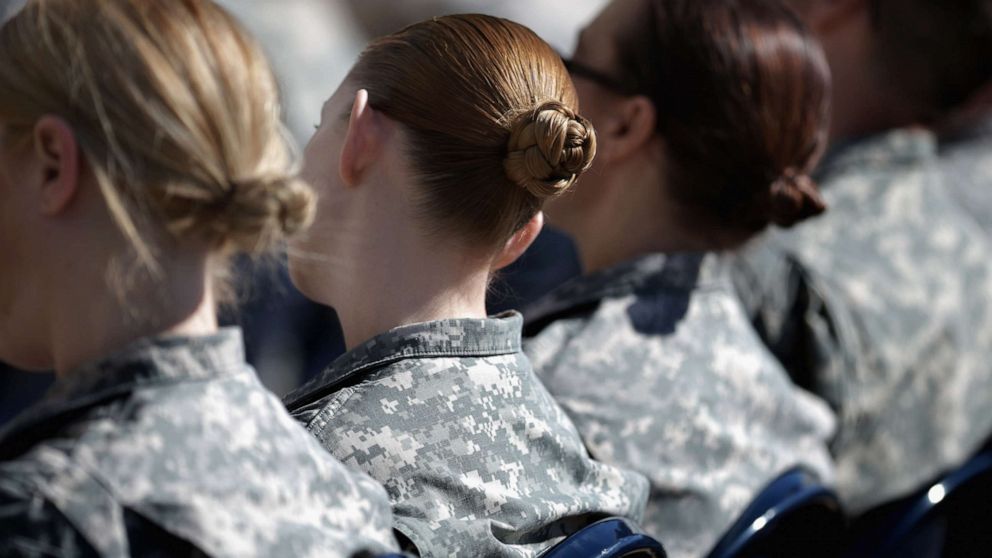Sexual assaults in military rise to more than 20,000, Pentagon survey says
In a setback for the U.S. military's efforts to reduce sexual assault in the military, a new Pentagon survey released Thursday shows the number of sexual assaults increased in 2018 to 20,500, almost the same levels as five years ago, a result that Pentagon officials say will lead to changes in its sexual assault prevention efforts.
The latest figures are included in an anonymous Pentagon survey conducted every two years that estimates the "prevalence," or rate, of sexual assault in the military. Sexual assault is defined as rape, sexual assault, forcible sodomy, aggravated sexual contact, abusive sexual contact and attempts to commit those offenses.
In 2016, Pentagon officials were encouraged by the significant drop in the estimate of sexual assaults to 14,900 in that year's survey, but they now acknowledge that they will have to adjust their prevention efforts in light of the new report.
This year's survey found that the number of estimated sexual assaults had risen to 20,500, almost the same number of 20,300 estimated in the 2014 survey.
Overall the survey found a 44 percent increase in the number of female victims of sexual assault from 4.3 percent in 2016 to 6.2 percent in 2018, there was zero change in the number of male victims of sexual assault from the previous survey.

A major finding in the survey was that female service members between the ages of 17 and 24 are at the greatest risk for sexual assault from their peers, a trend in line with another report released earlier this year that showed a significant spike in sexual assaults at the three military service academies. And that the perpetrators are peers of the same age range and same or slightly higher rank.
"It's extremely disheartening," Dr. Elizabeth Van Winkle, the executive director of the Office of Force Resiliency for the Defense Department, told ABC News in an interview ahead of the report's release. "These are our youngest service members and it is extremely frustrating because we've been working at this for a really long time."
"While we do have indications of progress in some areas this is not the direction that we want to go," said Van Winkle. "So we have to adjust course."
She described the data from the new survey, as well as the military service academy report, as a "wake-up call" that 17 to 24-year-olds in military services are "a group that we have not yet reached in terms of our strategies."
"This is the trip wire," said Nate Galbreath, Deputy Director of the Defense Department's Sexual Assault Prevention and Response Office. "This is what tells us that there's something going on that we need to hone in on. And so now that we have our trip wire set off and we've got a higher prevalence for women 17 to 24. We're going to be focusing very, very tightly on that."
But while there will be an increased focus on 17- to 24-year-olds in military services, "We cannot take our eye off of any of the targeted areas that we have been looking at across the board," said Van Winkle. "We continue to drive that message for our senior officers that they are responsible for setting the command climate."
This year's survey also found increases in sexual harassment and gender discrimination, patterns of behavior that can be precursors to sexual assault.
"We continue to struggle with maintaining a climate that meets our expectations for good order and discipline and treating everyone with dignity and respect," said Van Winkle.
Accordingly, efforts will focus on lower-level leaders, particularly non-commissioned officers, and how they should hold service members in their unit accountable.
"Our command climate surveys for a long time measured toxic leadership," said Van Winkle. "What we're moving towards is that you're not only accountable for your own behavior but you're accountable for true command climate. You are accountable for what's happening within the peers underneath you."
"What we now have to do is we really have to focus down and work with the E5's (sergeants) and those first-line folks that are right there on the front lines," said Galbreath. "To be able to say here are the tools that you can use to be able to set good order and discipline."

The task force recommendations, approved by Shanahan, include taking steps to make sexual harassment a standalone crime in the military, developing new command climate assessments, launching a program to catch serial offenders and better preparing new officers and enlisted leaders for how they can prevent and respond to sexual assault and sexual harassment.
There will also be better screening of potential military recruits to ensure they are of high character.
"We have to focus on who we are bringing into the services," Galbreath said at a Pentagon news conference on Thursday. "To select those people who are most compatible with our core values."
The Pentagon survey found, once again, that retaliation for sexual assault victims stepping forward remains a concern. According to the survey, 64% of service members who reported sexual assaults perceived negative experiences or retaliation associated with their reporting.
Of those, 43% did not meet the legal criteria for retaliation, though that determination may not always indicate a victim's perception of possible retaliation.
"We can't always take action, in terms of a charge of retaliation, We can't always take action on that group," said Van Winkle, "But It's still our responsibility to make sure everybody's treating each other with dignity and respect."




